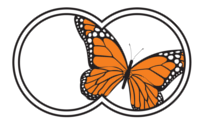Welcome to the monarch library! Our goal is to include all peer-reviewed articles on monarch biology with links to sites that will give you the easiest direct access to each article. Please contact leslie.ries@georgetown.edu if you 1) know of an article not included, 2) find a mistake in any of the listed articles, 3) know of a better link to access an article. Thanks! With your help we can provide the most complete, informative access to all papers on monarch biology.
Library
Field Definitions
First author: Last name of the first author
Type: Article or book chapter
Year: Publication year
Source: Journal or book
Category*: Broad scope of the publication.
Research topic (monarch & supporting research only)*: Specific topic.
Geographic focus*: Geographic setting for field studies.
Monitoring data used: Data from monitoring or public data efforts.
* Full list
995 result(s)
Category: Population dynamics
Type: Article
Year: 2020
Grant, T.J., D.T.T. Flockhart, T.R. Blader, R.L. Hellmich, G.M. Piman, S. Tyner, D.R. Norris, and S.P. Bradbury. (2020). Estimating arthropod survival probability from field counts: a case study with monarch butterflies. Ecosphere. 11 (4). https://doi.org/10.1002/ecs2.3082.
Category: Physiology/behavior, Evolution/range, Migration, Population dynamics
Type: Article
Year: 2020
Freedman, MG, Dingle, H, Strauss, SY, Ramírez, S. 2020. Two centuries of monarch butterfly collections reveal contrasting effects of range expansion and migration loss on wing traits. Proceedings of the National Academy of Sciences.117(46): 28887-28893. doi: 10.1073/pnas.2001283117
Category: Hostplant dynamics, Hostplant biology, Resource use
Type: Article
Year: 2020
Baker AM, Redmond CT, Malcolm SB, Potter DA. Suitability of native milkweed (Asclepias) species versus cultivars for supporting monarch butterflies and bees in urban gardens. PeerJ. 2020 Sep 25;8:e9823. doi: 10.7717/peerj.9823.
Category: Environmental performance, Natural enemies, Resource use, Hostplant dynamics, Habitat, Conservation/social dimensions
Type: Thesis
Year: 2020
Baker AM. 2020. OPTIMIZING MONARCH BUTTERFLY AND BEE CONSERVATION EFFORTS IN THE URBAN LANDSCAPE. University of Kentucky Theses and Dissertations | https://doi.org/10.13023/etd.2020.101
Category: Natural enemies
Type: Article
Year: 2020
Myers, A.T., Haan, N.L. & Landis, D.A. Video surveillance reveals a community of largely nocturnal Danaus plexippus (L.) egg predators. J Insect Conserv 24, 731–737 (2020). https://doi.org/10.1007/s10841-020-00248-w
Category: Overwinter dynamics
Type: Article
Year: 2020
Leong, KLH, Dees, R, Sletteland, H, Heptig, J, Richards, J, Reina, J. (2020) The seasonal occupancy of overwintering monarch butterflies, Danaus plexippus plexippus (Linnaeus, 1758) (Lepidoptera: Nymphalidae), at four California winter groves reflects grove conditions for winter aggregations, survival, and contribution to the next generation of butterflies. The Pan-Pacific Entomologist 96(2), 41-58. https://doi.org/10.3956/2020-96.2.41
Category: Physiology/behavior
Type: Article
Year: 2020
Davis, A. K. (2020). Evaluating cardiac reactions of monarch butterflies to human handling across three life stages. The Journal of the Lepidopterists' Society, 74(1), 43-50.
Category: Resource use, Hostplant biology, Hostplant dynamics, Monarch research
Type: Article
Year: 2020
He E, Agrawal AA. Clonal versus non-clonal milkweeds (Asclepias spp.) respond differently to stem damage, affecting oviposition by monarch butterflies. PeerJ. 2020 Nov 3;8:e10296. doi: 10.7717/peerj.10296. PMID: 33194443; PMCID: PMC7646301.
Category: Migration, Overwinter dynamics, Resource use, Supporting research
Type: Article
Year: 2020
Hobson KA, García-Rubio OR, Carrera-Treviño R, Anparasan L, Kardynal KJ, McNeil JN, García-Serrano E and Mora Alvarez BX (2020) Isotopic (δ 2H) Analysis of Stored Lipids in Migratory and Overwintering Monarch Butterflies (Danaus plexippus): Evidence for Southern Critical Late-Stage Nectaring Sites? Front. Ecol. Evol. 8:572140. doi: 10.3389/fevo.2020.572140
Category: Habitat, Resource use, Natural enemies
Type: Article
Year: 2020
Nestle, R.; Daniels, J.C.; Dale, A.G. Mixed-Species Gardens Increase Monarch Oviposition without Increasing Top-Down Predation. Insects 2020, 11, 648. https://doi.org/10.3390/insects1109064
Category: Commentary or review
Type: Article
Year: 2019
Sourakov, A. 2019. Opinion: the Future of Monarch Migration in Light of its Past. News of the Lepidopterists' Society 61(4):196-197
Category: Evolution/range, GMO/toxins, Monarch research
Type: Article
Year: 2019
Karageorgi M, Groen SC, Sumbul F, Pelaez JN, Verster KI, Aguilar JM, Hastings AP, Bernstein SL, Matsunaga T, Astourian M, Guerra G, Rico F, Dobler S, Agrawal AA, and NK Whiteman. 2019. Genome editing retraces the evolution of toxin resistance in the monarch butterfly. Nature 574, 409-412 | doi:10.1038/s41586-019-1610-8
Category: Evolution/range, Orientation, Migration
Type: Article
Year: 2019
Billings, J. 2019. Opening a window on southwestern Monarchs: fall migrant Monarch butterflies, Danaus plexippus (L.), tagged synchronously in southeastern Arizona migrate to overwintering regions in either southern California or central Mexico. Journal of the Lepidopterists' Society 73(4):257-267.
Category: Habitat, Conservation/social dimensions
Type: Article
Year: 2019
Flores-Martínez JJ, Martínez-Pacheco A, Rendón-Salinas E, Rickards J, Sarkar S and Sánchez-Cordero V (2019) Recent Forest Cover Loss in the Core Zones of the Monarch Butterfly Biosphere Reserve in Mexico. Front. Environ. Sci. 7:167. doi: 10.3389/fenvs.2019.00167
Category: Commentary or review
Type: Article
Year: 2019
Nail KR, Drizd L and Voorhies KJ. (2019) Butterflies Across the Globe: A Synthesis of the Current Status and Characteristics of Monarch (Danaus plexippus) Populations Worldwide. Front. Ecol. Evol. 7:362. doi: 10.3389/fevo.2019.00362
Pages
This database is a work in progress and is likely to contain several omissions and mistakes.
Please contact jeffpippen9@gmail.com with any additions or corrections.
